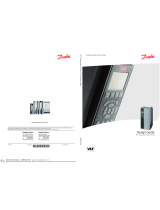
1.2 Decentral Design Benefits
In the following we will concentrate on describing decentralised installation of frequency converters, referred to here as motor controls.
There are two topologic concepts for the layout of motor control installations in a plant, in the following referred to as “centralised” and “decentralised”
installations. The two typologies are illustrated in the figure.
In a centralised installation:
- motor controls are placed in a central place
In a decentralised installation:
- motor controls are distributed throughout the plant, mounted
on or next to the motor they control
Decentralised does not mean
control cabinet free
, but merely that their
enormous size can now be reduced thanks to innovative designs of the
components that will be placed decentralised. There will continue to be
a need for cabinets for power distribution and for overall intelligence, and
there are areas, particularly in the process industry with areas such as
explosion protection, where centralised cabinets continue to be the pre-
ferred solution.
Placing the advanced and reliable electronics needed to ensure a smooth,
responsive and economical operation of the motor next to – or on – the
motor facilitates modularisation and reduces cabling costs and EMC prob-
lems dramatically. Further benefits:
Illustration 1.1: Centralised versus decentralised installa-
tions
• Space-consuming motor control cabinets in long rows of centralised panels are eliminated
• Reduced efforts for building in and wiring long screened motor cables where special attention on EMC terminations is required
• Heat dissipation from power electronics is moved from the panel into the plant
• Standardised machine elements by modularisation reduces design time and time to market
• Commissioning is easier and faster
Decentralised motor control is rapidly gaining ground despite of the advantages of the centralised control concept:
• no need for extra space around the motor or close to the motor
• no control cable wiring into the plant
• independence of plant environment
1.2.1 Direct Cost Savings
Motor controls for decentralised installations must be built to meet the harsh conditions in manufacturing areas - especially such conditions found in the
food and beverage industry, where frequent wash downs are required. This of course increases the cost of the drive. This increase will be more than set
off by savings in expenses for cabinets and cables.
The cable saving potential is considerable, as will be demonstrated by the following example.
1 The Decentral Concept VLT
®
Decentral FCD 300 Design Guide
6
MG.90.S1.02 - VLT
®
is a registered Danfoss trademark
1





















